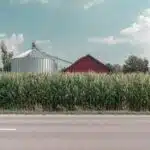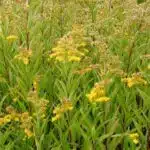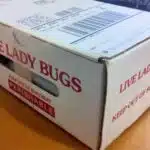Curly top is a destructive plant disease that affects crops such as sugar beets, tomatoes, and peppers. It is caused by a virus known as Beet curly top virus (BCTV), which is transmitted by the beet leafhopper. Curly top disease has been a significant problem for farmers in many regions, causing severe economic losses due to yield reduction and crop damage. In this article, we will discuss how to identify, treat, and prevent curly top disease in crops.
The first step in controlling curly top disease is to identify its symptoms accurately. The symptoms of curly top may vary depending on the type of plant affected, but typically include stunting of growth, yellowing of leaves, curling and twisting of leaves and stems, and discoloration of fruits. When these symptoms are observed in plants during the growing season, it is essential to confirm if they are caused by BCTV or other factors such as nutrient deficiency or insect infestation. Once confirmed that it’s indeed curly top disease caused by BCTV, appropriate measures must be taken immediately to prevent further spread and damage. This article aims to provide practical guidance on identifying the symptoms of curly top disease early enough for effective treatment and prevention strategies to help farmers achieve better yields while minimizing economic losses caused by this destructive virus.
Understanding Curly Top Disease
While it is important to understand the symptoms and treatments for curly top, it is equally crucial to delve deeper into what causes this disease. Curly top is caused by the beet curly top virus, which is transmitted by a specific type of leafhopper known as the beet leafhopper. This disease can affect a wide range of crops, including tomatoes, peppers, and beans, making it a concern for farmers across various regions.
Understanding virus transmission is key to preventing the spread of curly top. The beet leafhopper picks up the virus from infected plants and transmits it to healthy ones when feeding on their sap. It is therefore essential to monitor fields regularly for any signs of infected plants and take necessary measures such as insecticide application or removal of infected plants to control the spread.
Another crucial aspect of managing curly top disease is genetic resistance in crops. Plant breeders have been working on developing resistant varieties that can withstand infection by the beet curly top virus. Incorporating these resistant varieties into crop production systems can help prevent yield losses due to this disease. In short, understanding the transmission of the virus and utilizing genetic resistance in crops are key strategies for preventing and managing curly top disease.
The beet curly top virus: the culprit behind this disease will be discussed in-depth in the following section. By identifying its characteristics and how it spreads, we can better understand how to prevent its impact on crop production.
Beet Curly Top Virus: The Culprit Behind The Disease
Beet Curly Top Virus (BCTV) is a serious disease of sugar beet and other crops that is caused by the Beet Curly Top Virus. Symptoms of BCTV include stunted plants, leaf yellowing and curling, and reduced crop yields. Prevention of BCTV is possible through the use of resistant cultivars, careful crop rotation and the destruction of infected plant material. Insect management also plays an important role in preventing the spread of BCTV.
Symptoms Of Beet Curly Top Virus
Beet curly top virus is a devastating disease that causes significant economic losses for farmers worldwide. This pathogen has a wide host range, including tomatoes, peppers, and sugar beets. Symptoms of beet curly top virus can vary depending on the stage of infection and the plant species. However, some common signs include leaf curling, yellowing, stunting, and reduced yield.
Diagnosing curly top can be challenging since many other factors can cause similar symptoms. Therefore, it is crucial to confirm the presence of beet curly top virus using laboratory tests such as PCR or ELISA. These techniques can detect viral nucleic acids or specific viral proteins in infected plant tissues. Early diagnosis is critical for effective management of the disease.
Management techniques for beet curly top virus mainly focus on prevention rather than treatment since there are no effective chemical controls available currently. Integrated pest management strategies such as crop rotation, removal of infected plants and weeds from the field, use of resistant cultivars and insecticides may help reduce the incidence of this disease. Preventing the spread of beet curly top virus through insect vectors is also essential in managing this pathogen effectively. By adopting these management strategies and regularly monitoring crops for signs of infection, farmers can minimize damage caused by beet curly top virus and improve crop productivity.
Prevention Of Beet Curly Top Virus
Effective management of beet curly top virus depends largely on prevention since there are currently no effective chemical controls available. Preventing the spread of this disease through insect vectors is essential in managing this pathogen effectively. To minimize damage caused by beet curly top virus and improve crop productivity, farmers must adopt integrated pest management strategies that focus on prevention.
Crop rotation is an essential strategy for preventing and managing beet curly top disease. The use of resistant cultivars can also help reduce the incidence of this disease. Farmers should remove infected plants and weeds from the field as they serve as hosts for the virus and insect vectors. Insecticides may also be used to control insect vectors but must be applied carefully to avoid harming beneficial insects such as pollinators.
Regular monitoring of crops is another critical strategy for preventing the spread of beet curly top virus. Early detection and diagnosis are crucial for effective management of this disease. Therefore, farmers should monitor their crops regularly for signs of infection using laboratory tests such as PCR or ELISA. By adopting these management strategies, farmers can prevent the spread of beet curly top virus, reduce crop losses, and improve food security for communities worldwide.
Common Crops Affected By Curly Top Disease
Curly top disease is a viral disease that affects a wide range of crops. It is caused by the Beet curly top virus (BCTV), which is transmitted by the beet leafhopper. This disease can cause significant yield losses and even complete crop failure in severe cases.
Common crops affected by curly top disease include tomatoes, peppers, beans, melons, and squash. The symptoms of curly top disease in plants vary depending on the crop and its growth stage. However, some common symptoms include stunted growth, yellowing and curling of leaves, and development of small, distorted fruit.
It is important for growers to be aware of the crops that are susceptible to curly top disease and to monitor them regularly for symptoms. Early detection and prompt action can help prevent the spread of the disease and minimize crop losses. In the next section, we will discuss how to identify the symptoms of curly top disease in plants.
Identifying The Symptoms Of Curly Top Disease
Symptoms of curly top disease are distinct and can easily be identified. Common signs include wilting, yellowing or stunting of leaves, and the curling of new leaves. The veins on the underside of the leaves are also likely to turn purple in color. Infected plants may start showing these symptoms within a week to a month after infection.
As curly top disease is caused by beet leafhoppers, it is important to control them as part of disease management. This can be done by removing infected plants, controlling weeds that may serve as alternate hosts for beet leafhoppers, and using insecticides when necessary. Preventive strategies such as crop rotation can also help in reducing the incidence of the disease.
Effective prevention strategies should be put in place before planting crops susceptible to curly top disease. These strategies include ensuring proper spacing between plants to reduce overcrowding which facilitates spread of the disease. It is also important to ensure that fields are free from weeds and other materials that may harbor beet leafhoppers. Early detection methods for curly top disease will help farmers identify infected plants early enough for effective treatment and management before extensive damage occurs.
Early Detection Methods For Curly Top Disease
The early detection of curly top disease is crucial to prevent its spread and minimize crop loss. There are several methods that can be used for the early detection of this disease, including visual inspection, symptomatology assessment, and laboratory testing. Visual inspection involves examining the plants for any signs of yellowing or stunting. Symptomatology assessment involves observing the plant’s growth pattern and identifying any abnormalities. Laboratory testing involves analyzing plant tissue samples to identify the presence of the beet curly top virus (BCTV).
Management strategies should be put in place as soon as possible upon detecting curly top disease. The first step in management is to remove infected plants and destroy them completely, ensuring they do not serve as a source of infection for other plants. Secondly, farmers should practice good sanitation practices such as cleaning farm equipment and tools regularly to prevent the spread of BCTV. Additionally, farmers should consider planting resistant varieties where available as a preventative measure against curly top disease.
Early detection of curly top disease is critical in preventing severe damage to crops. It provides an opportunity for immediate action to be taken by farmers before it spreads further. Early detection coupled with appropriate management strategies can significantly reduce crop losses caused by this disease. The next step after early detection is confirming BCTV as the cause of curly top disease which will be discussed in detail in the subsequent section.
Confirming Bctv As The Cause Of Curly Top Disease
Early detection methods for curly top disease are essential for effective management. However, before implementing control measures, it is crucial to confirm that the causal agent is Beet curly top virus (BCTV). This can be achieved through BCTV testing using various laboratory techniques.
PCR-based assays have proven to be a reliable and sensitive method for BCTV detection. These tests target specific genes of the virus and amplify them, allowing for the identification of infected plants. Another useful technique is serological testing, which involves detecting antibodies produced by the plant in response to the virus. ELISA-based assays are commonly used for this purpose.
It is important to note that other viruses or environmental stresses can cause symptoms similar to curly top disease, making it necessary to rule out other alternative causes. Accurate diagnosis of the causal agent will facilitate appropriate control strategies and reduce unnecessary costs associated with ineffective management practices.
Moving forward, treatment options for curly top disease will depend on various factors such as crop type, severity of infection, and economic viability.
Treatment Options For Curly Top Disease
Curly top disease is a viral infection of plants caused by the beet curly top virus, and it can be treated using various methods, such as medication, surgery, physical therapy, vaccines, dietary changes, laser treatment, exercise, herbal remedies, aromatherapy, homeopathy, acupuncture, hypnosis, stress management, cognitive behavioral therapy, and occupational therapy.
Medication is the most common form of treatment for curly top disease, however surgery may be needed in some cases depending on the severity of the infection.
Physical therapy and vaccines can be used to reduce symptoms and improve the overall health of the patient. Dietary changes and laser treatment may also be helpful in treating the disease.
Herbal remedies, aromatherapy, homeopathy, acupuncture, hypnosis, stress management, cognitive behavioral therapy, and occupational therapy can all be used to help manage the symptoms of curly top disease and improve the patient’s quality of life.
Medication
Curly top is a viral disease that affects numerous crops, including tomatoes, beans, and peppers. The most effective way to manage curly top is through prevention strategies, such as controlling the vector population (leafhoppers) and removing infected plants. However, once a plant becomes infected with curly top, there are limited options for treatment.
Medication can be used as an alternative remedy to control curly top symptoms. Foliar applications of insecticides or systemic pesticides can be applied to control the leafhopper population and reduce the spread of the virus. Additionally, antiviral medications can be injected into plants to reduce the severity of symptoms. However, some strains of curly top may be resistant to certain medications.
It is important to note that chemical treatments should only be used as a last resort due to potential environmental and health risks. Alternative remedies such as crop rotation or intercropping with non-host plants can help prevent the spread of curly top without relying on medication. Ultimately, preventing initial infection through vector control and removing infected plants remains the most effective treatment option for managing curly top disease.
Surgery
As a plant pathologist, it is essential to explore all possible treatment options for managing curly top disease. While medication and prevention strategies can be effective, surgery is another alternative that is gaining attention in recent years. Surgery involves the physical removal of infected leaves or stems from the plant to prevent further spread of the virus.
The surgery process usually requires a skilled professional and may vary depending on the severity and location of the infection. Recovery time may also vary depending on the size of the plant and extent of the damage. Post-surgery care is critical to ensure proper healing and minimize stress on the plant. This may include providing adequate nutrients, water, and protection from environmental stressors.
While surgery can be an effective treatment option in some cases, it should only be considered when other methods have failed or are not feasible. Additionally, surgery can be costly and time-consuming compared to other treatments such as prevention strategies or medication. As with any treatment option, it is important to weigh the benefits and risks before making a decision on which method to use for managing curly top disease.
Chemical Control Measures For Curly Top Disease
Curly top disease is a viral infection caused by the beet curly top virus. It affects a wide range of crops, including tomatoes, peppers, and beets. The disease causes stunted growth, yellowing of leaves, and curling of leaf margins. Chemical control measures are one way to manage this disease.
Various chemical treatments are available for managing curly top disease. These treatments include insecticides that target the vector of the virus, which is the beet leafhopper. Other treatments involve applying systemic insecticides or fungicides on the plants to prevent further spread of the virus in plant tissues. However, it is important to note that chemical treatments have their limitations in terms of effectiveness and sustainability.
Chemical vs natural control methods have been a topic of debate among plant pathologists. While chemical treatments can provide immediate relief from diseases, they come with negative consequences such as harmful effects on non-target organisms and environmental pollution. Therefore, it is essential to weigh the effectiveness of chemical treatments against their impact on the environment before choosing them as an option for managing curly top disease.
Key Points:
- Various chemical treatments are available for managing curly top disease
- Chemical treatments have their limitations in terms of effectiveness and sustainability
- It’s essential to weigh the effectiveness of chemical treatments against their impact on the environment before choosing them as an option for managing curly top disease.
In conclusion, chemical control measures can be effective in treating curly top disease but must be used judiciously due to their potential negative impact on non-target organisms and environmental pollution. In addition to these methods, natural and organic control measures can also be utilized to manage curly top disease without harming the environment and other beneficial organisms present in agricultural fields.
Natural And Organic Control Measures For Curly Top Disease
Organic remedies are becoming increasingly popular in the agricultural industry, particularly for controlling plant diseases. When it comes to curly top disease, there are several natural and organic control measures that farmers can use to manage the spread of this viral infection. These remedies include crop rotation, intercropping, and companion planting.
Crop rotation involves planting different crops in a particular field each season to avoid building up pathogens related to curly top disease. Intercropping is another method where two or more crops are grown together in the same field. The idea behind intercropping is that the plants will work together to deter pests and promote healthy growth. Companion planting is also an effective way to control curly top disease as certain plants can repel pests or attract beneficial insects to fight off infections.
Alternative prevention methods can also be implemented to protect crops from curly top disease. For instance, using resistant varieties of plants that are less susceptible to this viral infection can be helpful. Additionally, farmers can use physical barriers such as insect nets or row covers to keep pests away from their crops. These simple yet effective organic remedies and alternative prevention methods can help farmers manage curly top disease without relying on harmful chemicals.
As we have seen, there are several natural and organic control measures that farmers can use to combat curly top disease in their crops. By implementing these remedies and alternative prevention methods, farmers can protect their crops from this viral infection while avoiding the use of harmful chemicals that may harm the environment and human health. In the subsequent section, we will explore some additional tips for preventing curly top disease in crops.
Preventing Curly Top Disease In Crops
- Crop rotation is an effective cultural practice that can be employed to reduce the severity of Curly Top Disease in crop plants.
- Planting resistant cultivars and avoiding volunteer host plants can also help reduce the spread of the disease.
- Timely applications of insecticides and removal of infected plant material is essential for preventing the disease from spreading.
- Disease scouting is another recommended cultural practice that can help to identify a potential outbreak of Curly Top Disease in a timely manner.
Crop Rotation
Crop rotation is an effective technique for preventing curly top disease in crops. By rotating crops, farmers can reduce the risk of disease transmission and maintain soil health. The benefits of crop rotation are numerous, including improved soil fertility, reduced pest and weed pressure, and increased crop yields.
For small farms, there are several techniques for implementing crop rotation. One approach is to divide the farm into different zones and rotate crops within each zone. Another technique is to rotate crops based on their nutrient needs, planting nitrogen-fixing legumes in one year followed by a non-legume crop the next year. Additionally, intercropping can be used to maximize space and increase diversity while still maintaining proper crop rotation practices.
Overall, crop rotation is an essential component of any integrated pest management program aimed at preventing curly top disease in crops. By utilizing this technique, farmers can improve soil health, reduce the risk of pests and diseases, and ultimately increase their yields and profitability. With careful planning and implementation of proper techniques, small farms can successfully incorporate crop rotation into their farming practices.
Cultural Practices
Cultural practices play a significant role in preventing curly top disease in crops. Proper crop nutrition and soil management are essential components of any cultural practice aimed at controlling the spread of this disease. Adequate fertilization, irrigation, and tillage practices help maintain healthy plants that are less susceptible to the disease.
One critical aspect of cultural practices is soil management. Farmers must maintain optimal soil conditions for their crops, including proper pH levels, organic matter content, and nutrient availability. This can be achieved through various techniques such as cover cropping and mulching, which help improve soil structure and fertility. Additionally, farmers can use green manure crops to add organic matter to their soils and improve nutrient uptake by their crops.
Another important cultural practice is crop nutrition. Proper fertilization is necessary to ensure that crops have adequate nutrients for optimal growth and development. Nitrogen, phosphorus, potassium, and other micronutrients are all essential for plant growth and resistance to disease. It is crucial to apply these nutrients at the right time in the crop’s growth cycle to maximize efficiency while minimizing waste. By utilizing appropriate cultural practices like these, farmers can effectively prevent curly top disease from spreading in their crops while maintaining high yields and profitability.
Crop Rotation And Curly Top Disease
Crop rotation is a crucial aspect of agriculture that involves the planting of different crops in a particular field over time. Crop diversity helps to maintain soil health and reduce the incidence of diseases and pests, including curly top disease. This disease is caused by a virus transmitted from infected plants to healthy ones through insect vectors.
Plant pathologists recommend crop rotation as a preventive measure for curly top disease. Farmers should avoid planting susceptible crops such as tomatoes, peppers, and beans in areas where the disease has occurred in previous seasons. Instead, they should consider planting resistant varieties or non-host crops such as cereals, grasses or legumes to break the cycle of infection.
Maintaining soil health is also essential in preventing curly top disease. Healthy soil contains beneficial microorganisms that help to suppress plant pathogens and enhance nutrient uptake. Farmers should adopt sustainable agricultural practices such as cover cropping and composting to improve soil fertility and structure. By rotating crops, maintaining soil health, and adopting sustainable agricultural practices, farmers can prevent and manage curly top disease outbreaks while ensuring food security for their communities.
To control beet leafhopper populations, growers must first understand the behavior of these insects. The beet leafhopper (Circulifer tenellus) is the primary vector responsible for transmitting curly top virus between plants. These small insects prefer warm weather with low humidity and feed on plants by piercing them with their mouthparts to suck sap from leaves and stems.
By reducing the number of weeds around fields and removing diseased plants promptly, farmers can limit beet leafhopper populations’ growth significantly. Additionally, using sticky traps or insecticides may be effective in controlling these pests when used appropriately. Insecticides must be applied at specific times during the growing season when adult beet leafhoppers are most active, following recommended label rates and application guidelines provided by certified pest control advisors or extension specialists.
Controlling Beet Leafhopper Population
Beet Leafhopper (BLH) identification is important for proper management strategies. To determine the presence of BLH, visual inspection of the upper and lower leaf surfaces is recommended. For treatment, insecticides can be used in combination with cultural control practices such as early planting, crop rotations and destruction of crop residues. To prevent Beet Leafhopper population, insecticides, crop rotation and physical barriers should be considered as part of an integrated pest management program.
Identifying Beet Leafhopper
Beet leafhopper management is an essential aspect of maintaining the health and productivity of crops. The beet leafhopper, a small insect that feeds on the sap of plants, is a vector for curly top virus, which causes stunted growth, yellowing leaves, and damage to the entire plant. Identifying leafhopper vectors is crucial in controlling their population and preventing the spread of disease.
The beet leafhopper can be identified by its distinctive coloration – green with white markings on its wings and body. It is about 1/8 inch long and moves quickly when disturbed. Adult beet leafhoppers are active from May to September and are most commonly found in areas with warm climates. They typically feed on plants such as sugar beets, tomatoes, peppers, and potatoes.
To identify beet leafhoppers, it is important to monitor crops regularly for signs of infestation. Look for yellowing leaves or stunted growth as these are common symptoms of curly top virus infection. Also, inspect plants closely for the presence of adult beet leafhoppers or their nymphs (young). Early detection allows for prompt treatment measures such as insecticide sprays or removal of infected plants to prevent further spread of disease.
In conclusion, identifying beet leafhopper vectors is a critical step in managing their population and preventing the spread of curly top virus. Regular monitoring for signs of infestation coupled with early detection helps to ensure that appropriate control measures are taken promptly. By taking proactive steps towards identifying and treating beetle infestations, farmers can protect their crops from significant damage thereby ensuring food security for all.
Treating Beet Leafhopper
Controlling the beet leafhopper population is essential to prevent the spread of curly top virus, which can cause significant damage to crops. Treating beet leafhoppers requires a multi-pronged approach that includes both chemical and organic pest control methods. One option is the use of insecticide sprays, which can be effective in reducing their numbers but must be used with caution as they may harm beneficial insects and other non-target organisms.
Organic pest control methods are an alternative to chemical treatments and involve the use of natural enemies or cultural practices that make it difficult for beet leafhoppers to thrive. For example, introducing predators such as ladybugs and lacewings into the field can help reduce their population. Cultural practices such as crop rotation and planting resistant varieties can also make it difficult for beet leafhoppers to establish themselves. Furthermore, farmers should practice good sanitation by removing infected plants promptly to prevent further spread of disease.
In conclusion, managing the beet leafhopper population is crucial in protecting crops from damage caused by curly top virus. Effective treatment measures involve a combination of chemical and organic pest control methods while taking into account environmental sustainability and food safety concerns. By adopting a holistic approach towards beetle management, farmers can ensure that their crops remain healthy and productive, thereby serving the needs of their communities and promoting global food security.
Implementing Disease Management Strategies
Effective disease management strategies are essential for the prevention and control of plant diseases. In the case of curly top, a viral disease commonly affecting tomato, pepper, and bean crops, implementing cultural practices can significantly reduce the spread of the disease. One such practice is crop rotation, which involves planting different crops in a given field each season to prevent the buildup of pathogens in the soil. Additionally, selecting resistant varieties is another effective way to manage curly top.
Disease resistance is a crucial aspect of managing curly top. Many plant breeders have developed resistant cultivars that can withstand infection by the virus. These plants exhibit reduced symptoms and are less likely to transmit the virus to other plants in their vicinity. Plant breeding programs should focus on developing more resilient varieties that can resist multiple strains of curly top virus.
Cultural practices and disease resistance are two critical components of an effective strategy to manage curly top. By implementing these methods, farmers can effectively prevent and control this devastating disease while maintaining high crop yields. However, it is important to note that despite such efforts, farmers still face significant economic losses due to fungal diseases like curly top. The subsequent section will explore these impacts in detail and suggest ways farmers can mitigate them.
Curly Top Disease And Economic Impact On Farmers
Curly top disease is a viral plant disease that can cause significant economic loss for farmers. This disease is caused by the Beet curly top virus (BCTV) and affects a wide range of crops, including tomatoes, peppers, and sugar beets. Symptoms of curly top include stunted growth, leaf curling, yellowing, and eventual death of the plant.
The economic impact of curly top disease on farmers can be devastating. Infected plants often have reduced yields or are completely destroyed, leading to financial losses for farmers. Furthermore, since there is no cure for curly top disease once a plant becomes infected, preventive measures are essential.
Preventive measures against curly top include using insecticides to control the populations of beet leafhoppers that carry the BCTV virus. Farmers can also use resistant plant varieties that have been bred to be less susceptible to the virus. Additionally, good sanitation practices such as removing diseased plants and weeds from fields can help reduce the spread of the disease. Overall, taking proactive steps to prevent the onset of curly top disease is crucial for minimizing its economic impact on farmers.
As such, understanding how to identify and prevent curly top disease is vital for any farmer who wants to protect their crop yields and profits. By utilizing effective preventive measures such as insecticides and resistant plant varieties while practicing good sanitation techniques in their fields, farmers can significantly reduce their risk of experiencing economic losses due to this destructive viral plant disease.
Conclusion And Key Takeaways
Curly top disease is a viral infection that affects several plants, including tomatoes, peppers, and sugar beets. Early symptoms of the disease include stunted growth, curling of leaves and stems, yellowing of veins, and wilting of the plant. Once infected with curly top virus, there is no known cure for the plant. Therefore, it is crucial to identify the disease early to prevent its spread to other plants.
Importance of early intervention:
- Early detection of curly top disease can help prevent its spread to other plants.
- Infected plants should be removed immediately to prevent further transmission of the virus.
- Prompt action can help reduce economic losses associated with the disease.
Long term effects of curly top disease:
- Curly top virus can remain in soil for several years after an outbreak.
- Infected plants can serve as a host for the virus and infect other nearby healthy plants.
- The long-term impact on crop production can be significant if not addressed promptly.
As a plant pathologist, it is important to educate farmers on how to identify curly top disease early. This will enable prompt intervention measures such as removing infected plants immediately to prevent further transmission. Farmers need to understand that even though there is no cure for this viral infection once it has affected a plant, preventing its spread can save crops from being entirely wiped out by the virus.
In conclusion, early identification and intervention are critical in preventing the spread of curly top disease in crops. It is vital for farmers to pay close attention to their crops’ health and report any signs of infection promptly. By doing so, they not only protect their own investments but also contribute positively towards maintaining food security by preventing potential crop losses due to this destructive viral infection.
Conclusion
Curly Top Disease is a viral disease that affects many crops in various regions across the world. It is caused by the beet curly top virus which is transmitted by the beet leafhopper insect. The symptoms of this disease can be devastating, causing stunted growth, yellowing of leaves, and curling of the foliage. Early detection methods are crucial for effective control and management strategies.
To prevent the spread of Curly Top Disease, farmers should implement proper pest management practices such as controlling the population of beet leafhoppers. Additionally, they should use disease-resistant varieties and avoid planting crops during peak beetle season. Farmers must also be aware of the economic impact that this disease can have on their livelihoods.
In conclusion, Curly Top Disease is a serious threat to global food security and requires immediate attention from farmers and plant pathologists. Effective control measures such as early detection methods, integrated pest management practices, and disease-resistant crop varieties can help minimize losses caused by this disease. By working together to combat Curly Top Disease, we can ensure a sustainable future for agriculture and food production worldwide.
Image Credits
- “person on top mountain” by Tory Hallenburg (featured)





























